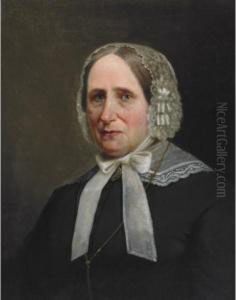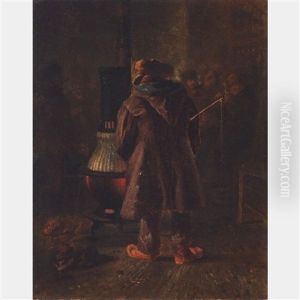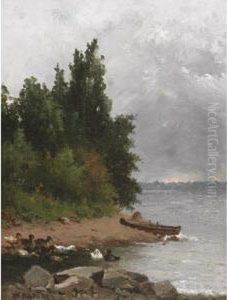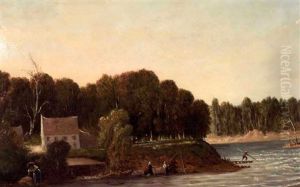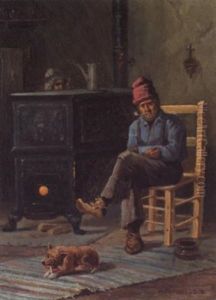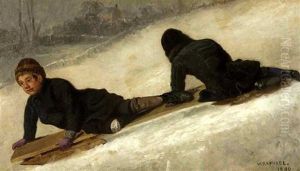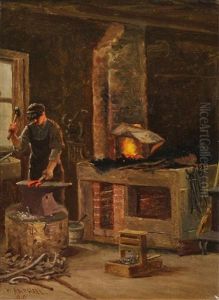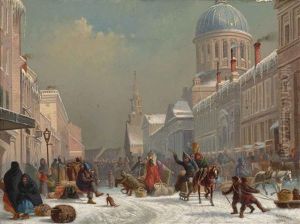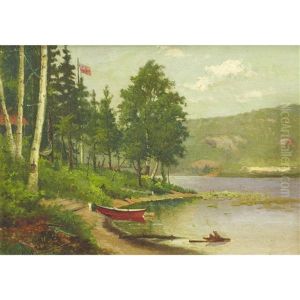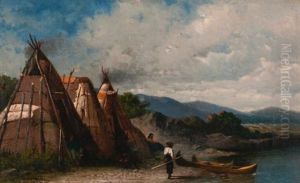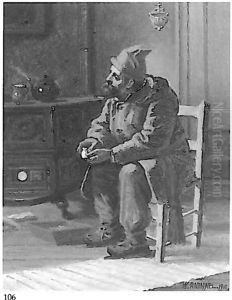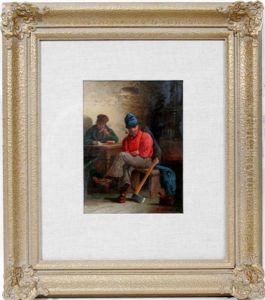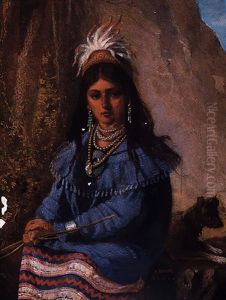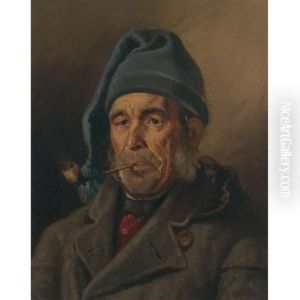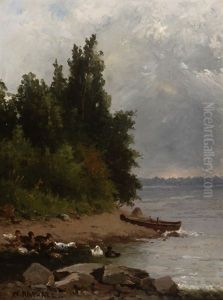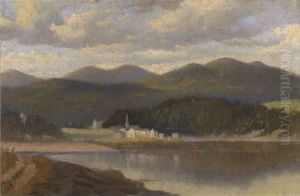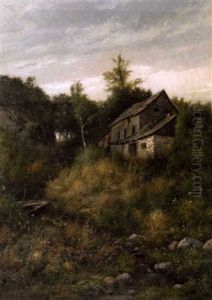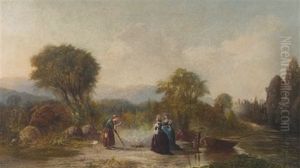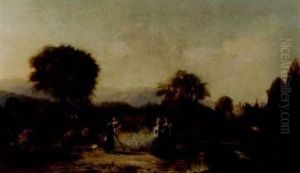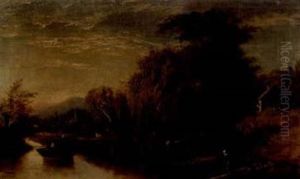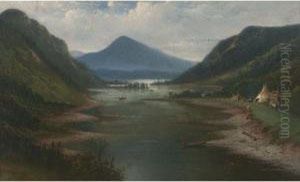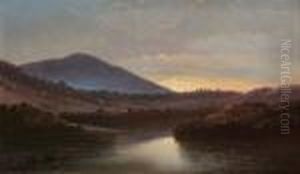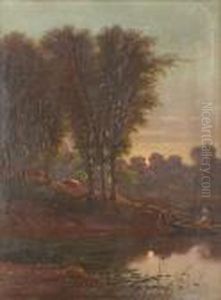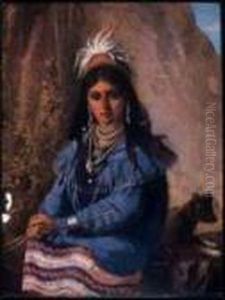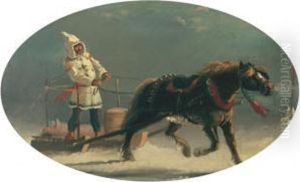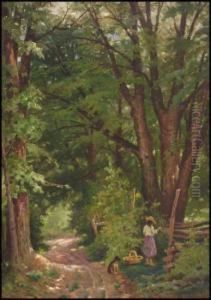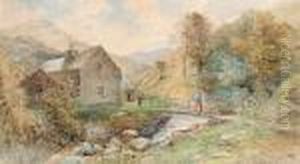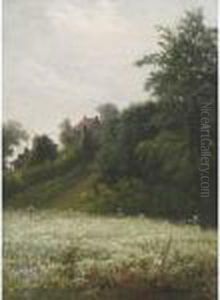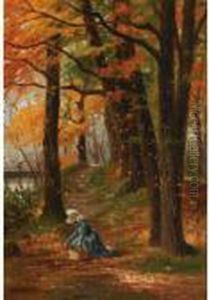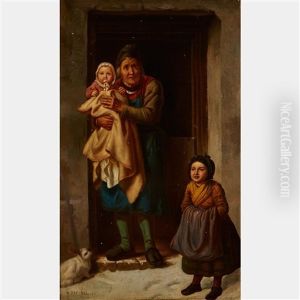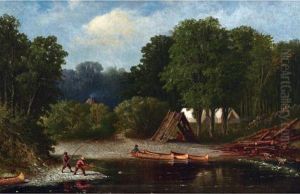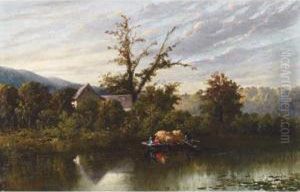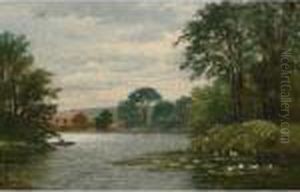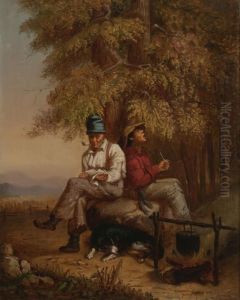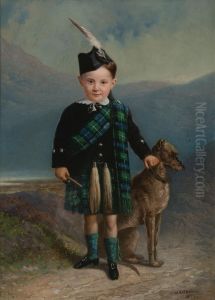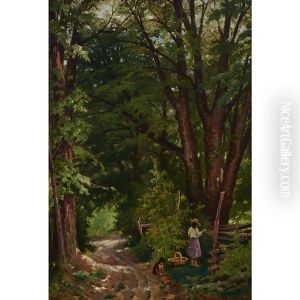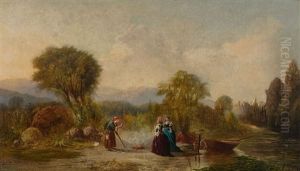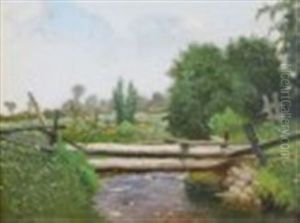William Raphael Paintings
William Raphael was a Canadian artist known for his landscape and marine paintings that captured the essence of the Canadian wilderness and urban life in the 19th century. Born on June 30, 1833, in Nakel, Prussia (now Nakło nad Notecią, Poland), Raphael immigrated to Canada in 1857, settling in Montreal. His artistic journey began in Europe, where he received his initial training. Upon moving to Canada, he became an important figure in the country's art scene, contributing significantly to the development of Canadian art during a time when the nation was still forging its cultural identity.
Raphael's work is characterized by its detailed realism and vibrant depiction of the Canadian landscape. He traveled extensively throughout Canada, painting a wide array of subjects from the bustling streets of Montreal to the serene landscapes of the Canadian wilderness. His marine paintings, which often depicted ships and harbor scenes, are particularly notable for their intricate detail and atmospheric effects.
Throughout his career, Raphael was an active member of the Montreal art community. He exhibited his work frequently, participating in shows with the Art Association of Montreal (now the Montreal Museum of Fine Arts) and other exhibitions across Canada and abroad. Despite facing the challenges of establishing an art career in a relatively young country with a developing art market, Raphael achieved considerable success and recognition during his lifetime.
Raphael's contributions to Canadian art were not limited to his own creations. He was also a mentor to younger artists and played a significant role in the artistic community, helping to foster a supportive environment for the development of Canadian art. His legacy includes not only his beautiful landscapes and marine paintings but also his influence on the generations of Canadian artists who followed him.
William Raphael passed away on May 19, 1914, in Montreal. Today, his works are held in numerous public and private collections, including the National Gallery of Canada, testament to his enduring impact on the country's artistic heritage.

